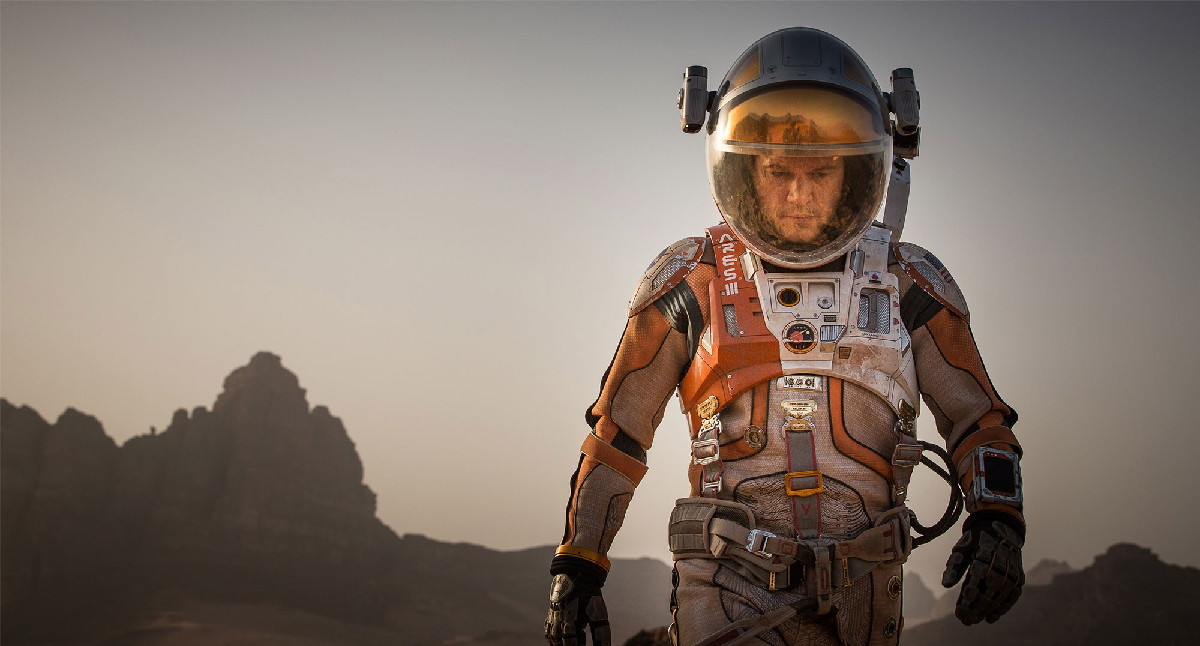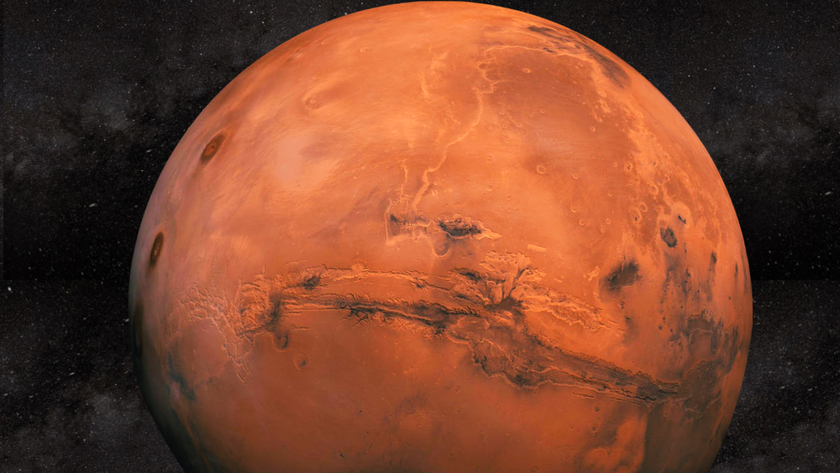From 'The Martian' to Mars: How Hollywood Aids Space Exploration

Though Hollywood doesn't get everything about space exploration right, entertainment is an important way to get space-related messages out to the public, a panel of experts said this week at the 2017 Human to Mars Summit in Washington, D.C.
"For me, when I'm writing papers about whatever scientific project I'm doing, there's often a very long background piece — very dry, and not interesting to the general public," Peggy Wu, a human-machine interaction engineer at United Technologies, a conglomerate whose portfolio includes aerospace products said Tuesday (May 9) at the summit.
"Usually, I don't have a fun time reading it, and I don't think the general public does," Wu added during the panel discussion, which was webcast live. "Media helps make that more accessible and more exciting." [Learning From 'The Martian': Matt Damon Talks Movies As Teaching Tools (Video)]
Even many movies without a direct space connection — some in the Marvel comic book universe, for example — tend to use space technology, said writer and producer Tamara Krinsky. Her credits include the 1996 film "Star Trek: First Contact," and she is a part of The Scientific Research and Education Network, which aims to increase science literacy in youth.
Krinsky noted that Marvel uses science as a core for a creative concept. The 2015 film "Ant-Man," for example, mentioned the multiverse and nanotech. While such scientific concepts are starting points for inspiration, she said, "You're not getting an education in nanotech technology, and you're not expecting an education in nanotech technology."
The panelists agreed that it's OK for a sci-fi film to get some of the science wrong, for storytelling purposes. Wu, however, cautioned that there is a spectrum between "just plain wrong" and "it could be misleading."
She said the best way for artists to avoid misleading work is to lean on programs such as the National Academy of Science's Science and Entertainment Exchange, which aims to increase public knowledge of science through entertainment.
Get the Space.com Newsletter
Breaking space news, the latest updates on rocket launches, skywatching events and more!
NASA support
Recent forays into Mars storytelling include the blockbuster 2015 film "The Martian," which saw a fictional astronaut stranded on Mars, and this year's "Life," in which an International Space Station crew uncovers what could be evidence of life on the Red Planet.
Depending on whether a film aligns with NASA's priorities, the space agency may allow its logo to be used in Hollywood films. NASA did grant permission for "The Martian," which featured a quasi-scientific look at how a stranded astronaut could stay alive by himself on Mars, and eventually end up coming home to Earth.
"Life," by contrast, used an alternate NASA logo. That's because the space agency didn't want its logo to be used in a horror film, said Bert Ulrich, NASA's multimedia liaison for film and TV collaborations.
"We do a script review on fictional projects; we review to see if the meatball [logo] comes through or not," Ulrich said during the panel. He added that in some cases, such as Christopher Nolan's "Interstellar," directors may choose not to work with NASA for artistic-freedom purposes. ("Interstellar" also used an alternate NASA logo.)
NASA benefits from entertainment as well, Ulrich said. Last year's "Hidden Figures," which followed the story of black women who worked for the space program in its early days, helped NASA's goal to inspire new generations, he said. And movies such as "The Martian" can plant "an important seed" in the public's mind that Martian exploration is possible, which aligns with NASA's desires to send humans to Mars in the 2030s, Ulrich added. [Images: 'Hidden Figures' Movie Probes Little-Known Heroes of 1960s NASA]
He said NASA faced a public-perception problem after the space shuttle program ended in 2011, making American astronauts dependent on Russian Soyuz spacecraft for rides to and from orbit. As a result, many people thought NASA was dying or dead.
NASA's recent resurgence is in part due to entertainment, Ulrich said. The August 2012 landing of the Curiosity rover on Mars inspired more discussion about the Red Planet than the agency had anticipated, he said, which eventually bled into movies such as "The Martian."
Further, the popular TV series "The Big Bang Theory" had one of its characters go to the International Space Station with real-life astronaut Mike Massimino, specifically because co-creator Bill Prady wanted to give support to NASA, Ulrich said.
"These little things, they help," Ulrich said. "It gets people interested, and then, before you know it, we had films like 'Gravity' and 'Interstellar.' Everything was building up."
Follow Elizabeth Howell @howellspace, or Space.com @Spacedotcom. We're also on Facebook and Google+. Original article on Space.com.
Join our Space Forums to keep talking space on the latest missions, night sky and more! And if you have a news tip, correction or comment, let us know at: community@space.com.

Elizabeth Howell (she/her), Ph.D., was a staff writer in the spaceflight channel between 2022 and 2024 specializing in Canadian space news. She was contributing writer for Space.com for 10 years from 2012 to 2024. Elizabeth's reporting includes multiple exclusives with the White House, leading world coverage about a lost-and-found space tomato on the International Space Station, witnessing five human spaceflight launches on two continents, flying parabolic, working inside a spacesuit, and participating in a simulated Mars mission. Her latest book, "Why Am I Taller?" (ECW Press, 2022) is co-written with astronaut Dave Williams.












